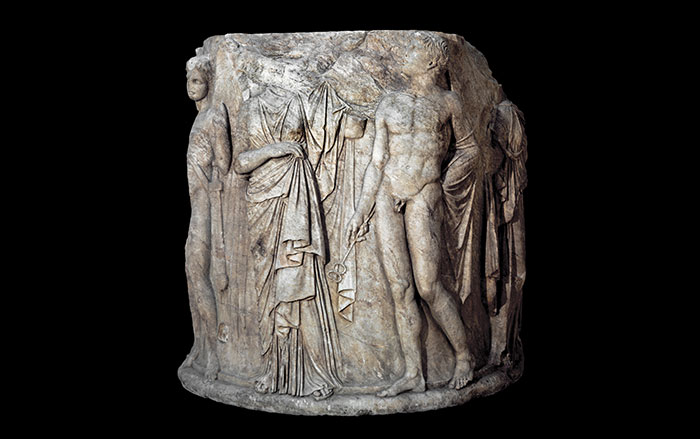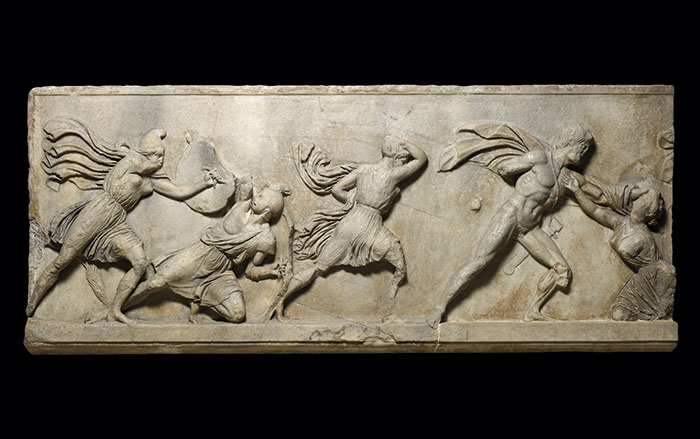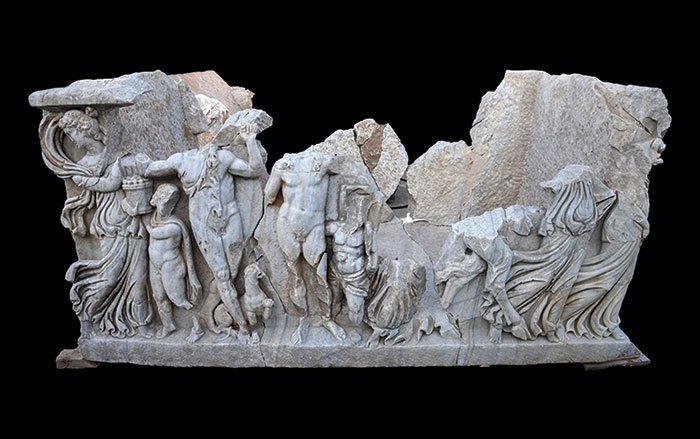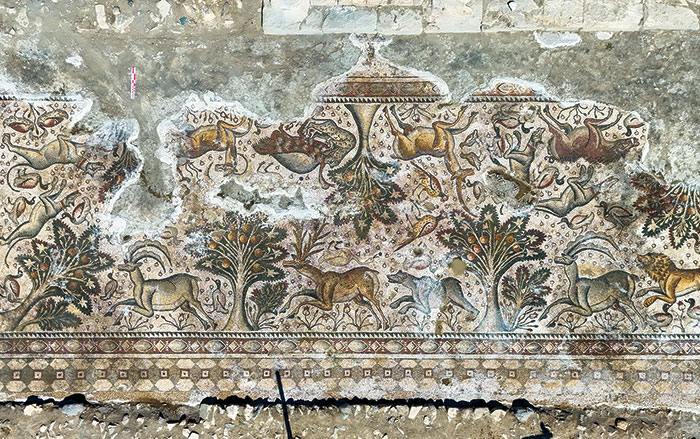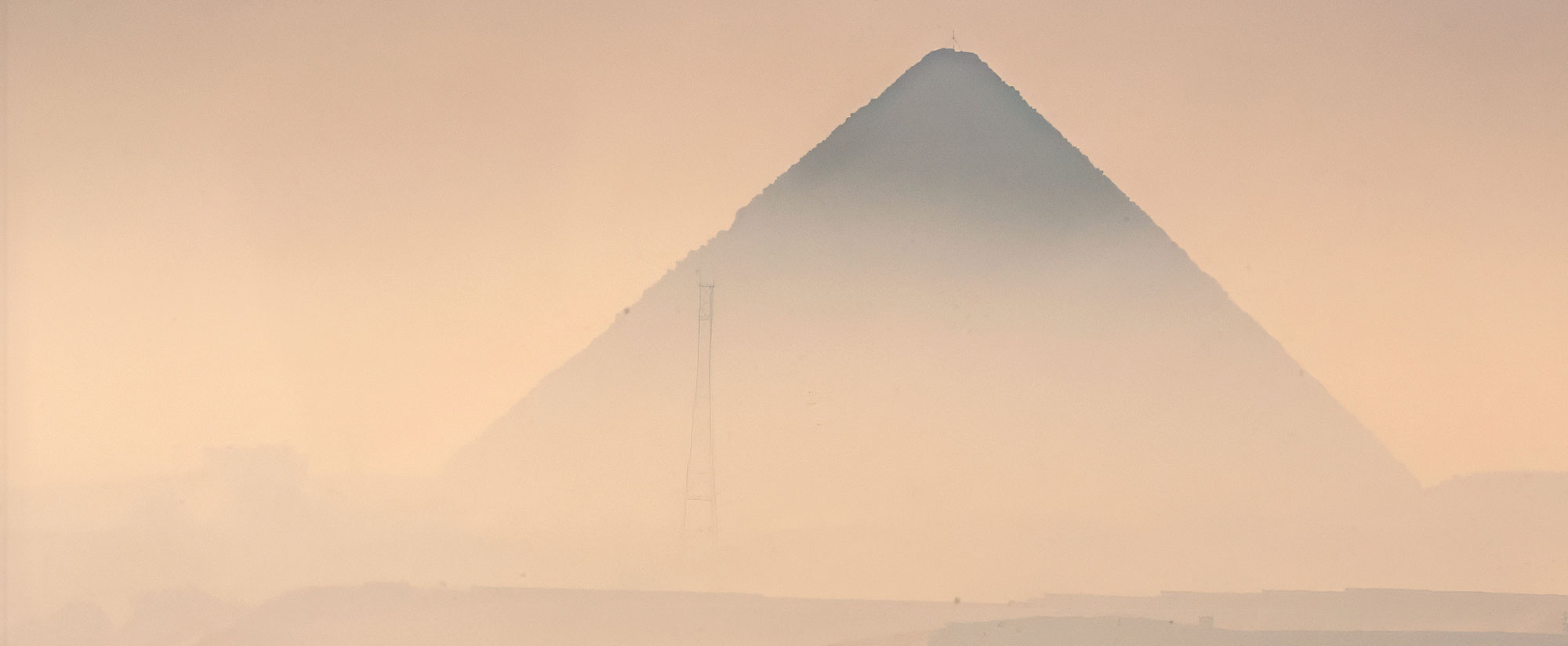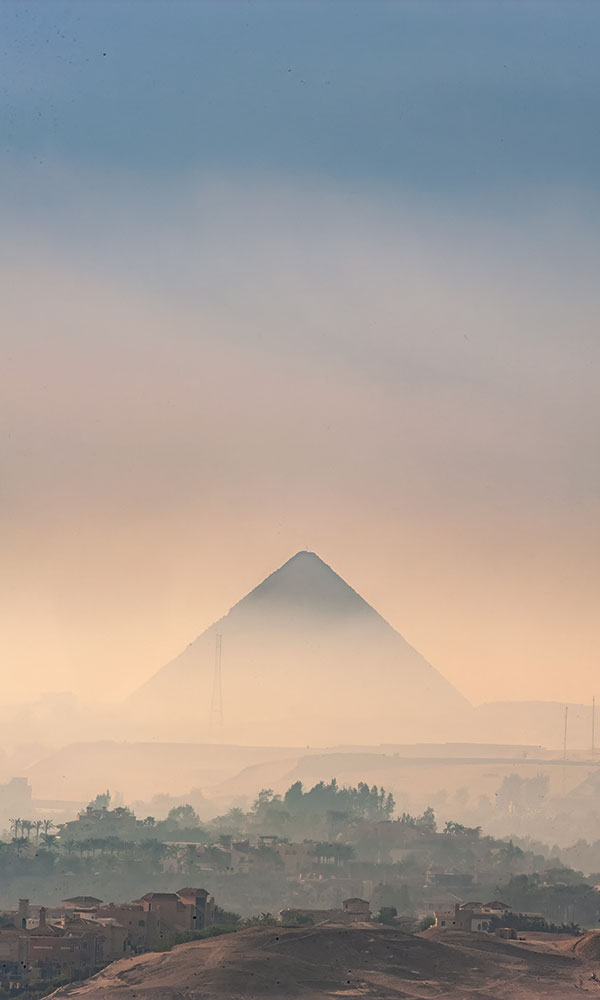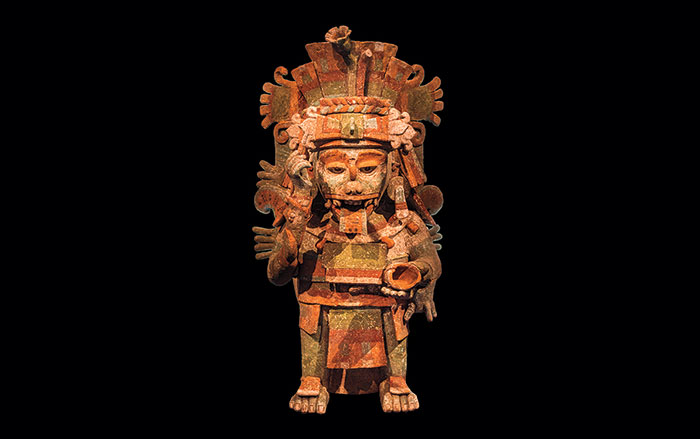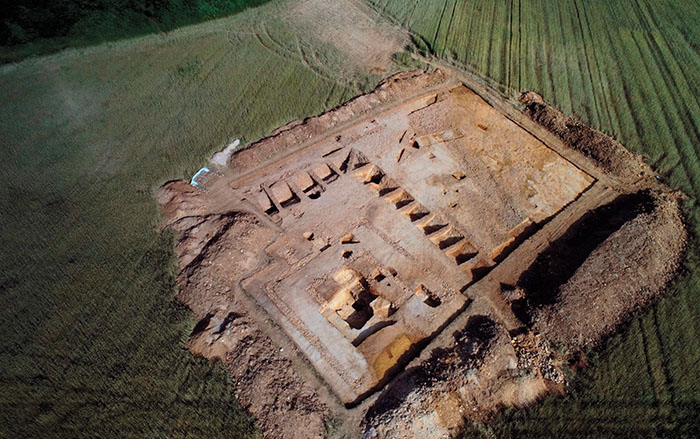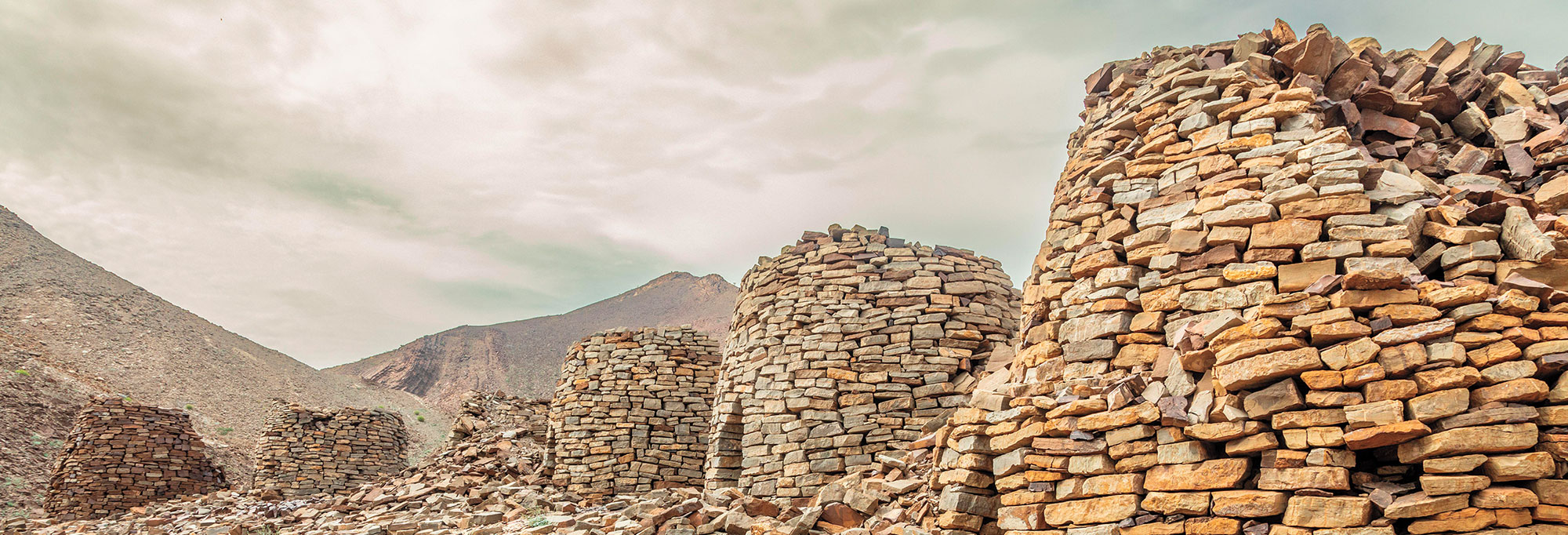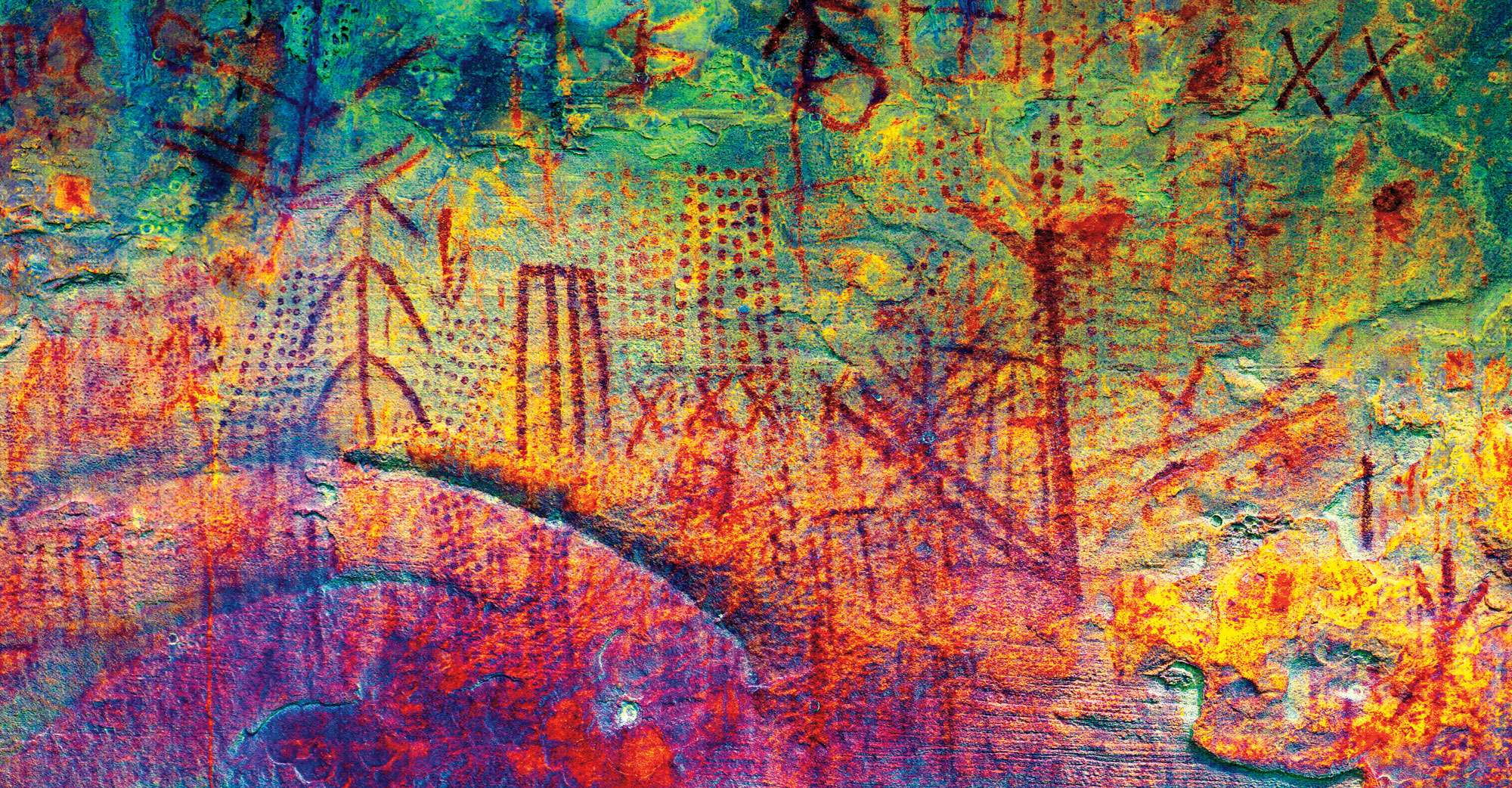

Turkish authorities have arrested looters who are suspected of tunneling their way into one of antiquity's most intriguing tombs. The looters reached the underground chamber, which lies below a temple to Zeus near the town of Milas, by digging in from a nearby house and an adjacent barn. Scholars believe the tomb belonged to Hecatomnus, the fourth-century B.C. ruler of Caria, a kingdom in what is now southwestern Turkey. Hecatomnus was the father of Mausolus, who was buried in the Mausoleum of Halicarnassus, one of the seven wonders of the ancient world. (The architectural term mausoleum is derived from the Carian ruler's name.)
The tomb's walls are decorated in colored frescos that are in need of immediate conservation. The chamber held an elaborately carved marble sarcophagus with a relief of a bearded, reclining man, believed to depict Hecatomnus. According to journalist Özgen Acar, who has followed the illicit antiquities trade in Turkey for decades, the looters first entered the tomb in the spring of 2008 and were looking for a buyer for the sarcophagus this summer when the authorities moved in. Police arrested 10 suspected looters in a raid in August. At press time, five of the defendants remained in jail awaiting court proceedings. It's likely the looters had already sold artifacts from the tomb on the black market—shelves in the chamber are now empty.
Acar believes that while the drilling equipment they used to tunnel into the site may have been sophisticated, the looters were not professionals. "They didn't have any expertise," says Acar. "They were locals." But Turkey's Culture Minister Ertugrul Gunay believes otherwise. "This is not an ordinary treasure hunt. It's very organized and it's obvious that they received economic and scientific help," he told the Anatolia News Agency, adding that Turkey would investigate the suspects' foreign connections.
Due to the ongoing police investigation, details about both the case and the discovery are still incomplete. But there is little doubt that the tomb is potentially of great importance for understanding the art and craftsmanship of the Carians, the greatest example of which was the Mausoleum of Halicarnassus. Created by the finest architects and sculptors of the day, parts of the mausoleum stood until the late fifteenth century. A statue of Mausolus in the British Museum seems to bear a family resemblance to the bearded man depicted on the sarcophagus.


